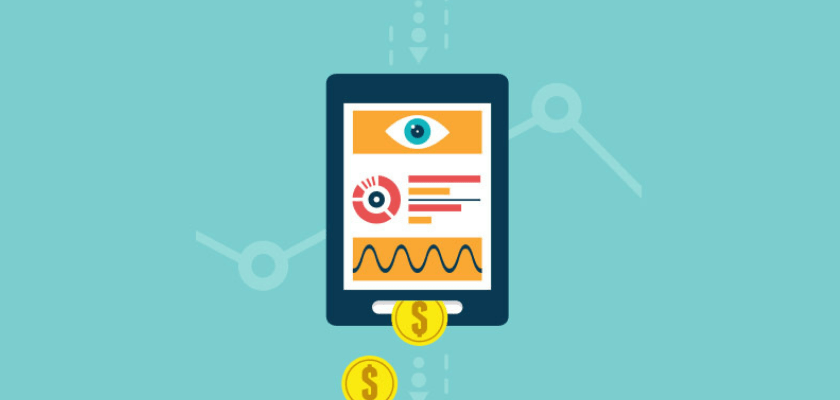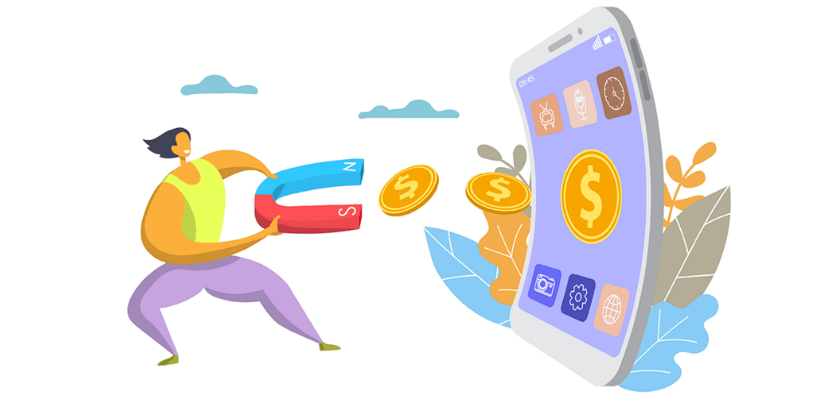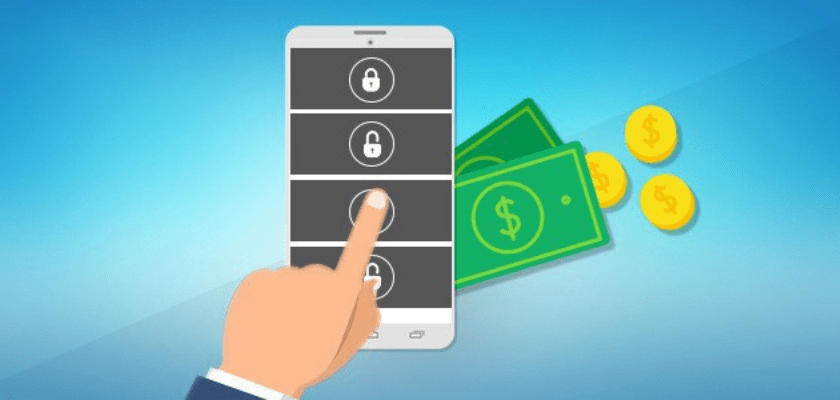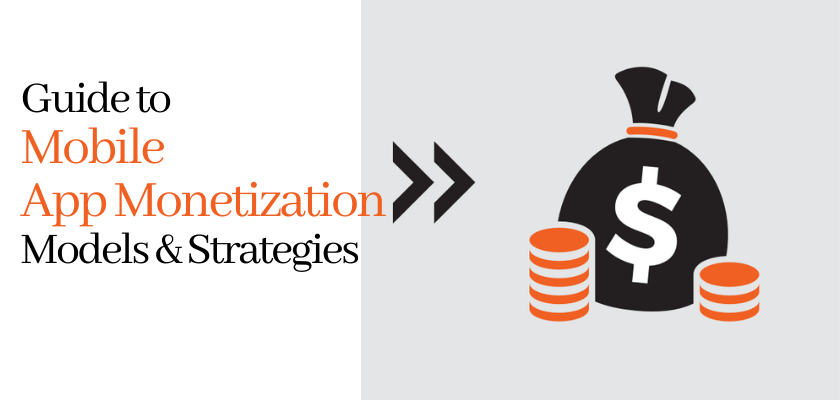When Google Play Store was launched in 2008, there were only a few apps available for the users. However, with time, the Play Store is booming with more than 15 million applications including the ones that follow mobile app monetization models that are available on both the Android and iOS platforms. In today’s digital age, the mobile application development industry is growing at a monumental rate with several devices such as Tablets, Smartphones, Wearables, etc. added to it.
As the number of mobile apps is continuously increasing in the market, business owners as well as mobile app developers are now incorporating the mobile app monetization models to generate more revenue through their apps. However, this thought comes with the biggest challenge of choosing the right mobile app monetization strategy to proceed with.
Besides investing in professional mobile app development services, it is very important for businesses to select the right app monetization model that can retain loyal users, keep the product afloat, communicate with the users, so on and so forth. But the question is how to choose the mobile app monetization model?
Before we jump into the topic, let’s first understand what app monetization is and the different app monetization models and strategies that you can choose from.
Highlights of Contents
What is App Monetization?

App monetization is one of the easiest and effective ways to make money through the mobile app converted from app users. However, it consists of several models that can be included in the apps to help app owners generate more revenue.
While some of these models depend on the categories of the mobile app, other work on the specific areas of app monetization. Therefore, it is imperative for every mobile app development company to know the various ways to help their clients generate more revenue.
There are mainly two types of apps available in the market that incorporates app monetization methods in different ways.
1. Paid Apps – These apps can be used only when the users pay for it. However, there’s no guarantee that the app will meet their expectations and be worth the risk of paying without trying the app. This might help you earn money at an initial level but for the long-run, you might lose your loyal users.
2. Free Apps – These apps are available for free, however, they include different monetization strategies for the app owners to generate some revenue.
In order to make your users install the app so you can generate revenue, it is important to focus on:
- Complete user experience
- Changing users’ expectations
- Growing revenue through the app
Many-a-times app developers forget about the user experience and focus on generating more revenue. This way developers end up losing their potential users that can help in the long-run.
App owners must understand that a happy user means more revenue. When you implement an app monetization strategy on your app, your user experience is also affected. This can be reduced or mitigated, however, it is still going to affect the user experience that can annoy them and they might turn to an alternative.
Top 6 App Monetization Models and Strategies to Generate More Revenue

There are mainly six ways of monetizing an app. This blog discusses each one’s advantages and disadvantages so that it’s easy for you to choose the best way to monetize your app.
1. Paid Downloads
If you’re investing in mobile application development, it’s obvious that you want to make money from it. Charging users a fee to download your app and use it, is one of the simplest ways to make money with an app.
You are free to charge whatever you want for your application. However, if you will charge users a download fee, it should be in the range that they’re used to paying. While pay-to-download is the most straightforward app monetization model, it still has some drawbacks. You can’t expect to get as many downloads as any free app. Some people don’t prefer installing an app unless it is free.
It’s obvious that paid mobile app users will be highly engaged. Anyone who pays for a download will want to get the most out of their investment. If those users are using your frequently, you have immense opportunities to make more money from them with other mobile app monetization models.
2. In-App Purchases
The in-app purchase monetization model is suitable for both free and paid apps. You can use this strategy for physical as well as virtual products.
Gaming apps are striking examples that leverage the in-app purchase methodology for virtual coins or experience upgrades or unlock new features. For example, Pokemon Go a free mobile app that earns revenue from in-app purchases.
People investing in eCommerce mobile app development services can also benefit from this model by selling physical or digital products online.
3. Subscription-based Apps
Subscriptions are a brilliant way to generate recurring income through the mobile app. Both Google Play Store and Apple App Store allow you to create and set up a subscription-based business model with your app.
The subscription fee is mostly charged on a monthly basis. However, you are free to set up quarterly or annual billing cycles for your users. It’s good to offer a better monthly fee for longer app subscription terms. Subscription-based apps are suitable for a wide array of industry verticals and all the possible use cases.
Let’s say if you’re creating a health & fitness app, you can charge your users a monthly subscription fee for getting access to workout sessions, diet plans, videos, and training. If you’re running a dry cleaning business, you could also take advantage of the subscription-based business model for offering pick-up and delivery cleaning services with your app.
4. Free + Premium = Freemium Model
The freemium business model is a combination of subscriptions and in-app purchases models. You can offer a trial version with basic features initially and then offer a premium version with new and advanced features to deliver a better user experience.
You should also make sure that the cost of the premium features is justified. If there’s only minor convenience between both the app versions, users won’t prefer to upgrade to the premium version.
Another exciting option is to offer extended free trial versions of those features to encourage users to upgrade to the premium version. Some users may not realize what they’re going to miss until they try the version. So don’t hesitate to offer a premium month to your users for free.
5. In-App Advertising
Ad revenue is one of the most popular app monetization models. This strategy allows you to sell space within your app for advertisements. In-app advertising comes in different shapes and sizes.
Types of In-App Advertising

i. Banner Ads
These are the most common forms of advertising for both free and paid apps. It includes banners on the app’s UX using a small space within the app. However, banner ads usually annoy users and affect the UX of the app.
ii. Native Ads
This type of ad looks like another post on the timeline. This famous type of advertising is used for higher user engagement and to look and feel native.
iii. Interstitial Ads
This type of ad is shown on the full-screen without hurting the user experience of the app. The main idea behind this type of advertising is to have a separate user flow and is usually displayed at the end of the flow.
iv. Video Ads
Video ads are promotional ads that offer a reward to users on watching a video. In return, the app owners get a chance to make some money.
v. Rewards Ads
This is an extremely popular form of mobile app monetization strategy that works as per the rewards for the users. The app users earn rewards when they interact with the content.
vi. Affiliate Ads
This type of advertising works on the basis of commissions from other apps, services, and products. But you need to make sure that the ads are placed as per the relevant points to prevent them from affecting the UX.
Types of Revenue Models
- CPC (cost-per-click)
- CPI (cost-per-install)
- CPA (cost-per-action)
- CPM (cost-per-mile)
- CPV (cost-per-view)
Also, note that how you’re paid and how much you get paid depends on several factors. For instance, just by displaying a banner ad with a CPV revenue model usually won’t get you paid as much as CPI or CPC revenue model.
Advantages of In-App Advertising
- Extremely easy to implement
- Passive income source
- Effective with various types of ads
Disadvantages of In-App Advertising
- Disturb user experience
- Annoy users that can make it difficult to retain them
- Not recommended for apps that offer important functions
6. Product Extensions
This mobile app monetization strategy is an effective way to make money for your business, products, or services. However, the money won’t be generated directly from the actions taken within your mobile app.
For example, let’s take a product called QuickBooks, an online accounting software that has more than 50% of share in the accounting software application market. QuickBooks is a paid software, however, anyone who purchases the software can use the Android and iOS app for free. However, you cannot generate revenue directly from the app. Users can sign up for a QuickBooks subscription and not use the app in the future.
However, users prefer using apps. With apps, the software can be accessed easily with a native mobile app experience that makes the product more valuable.
Pre-Requisites for Mobile App Monetization

- Understand your mobile app user persona, their expectations, needs, and if they’re interested in investing in an app.
- Increase your user base and implement your strategies. It is crucial to implement a customer acquisition strategy for multiple marketing channels to grow your user base.
- Your app idea must be unique to hook the users and make them pay some money in the app.
- Do thorough competitor analysis to see what app monetization strategies your competitors are using, what their opportunities are, and how to make more money.
- Mobile app store optimization using the right keywords, description, screenshots, etc. is important to get your app noticed by your target audience.
- Make sure to implement the right app monetization model during the launch of the app.
Opt-in and Mobile App Security Services

Data privacy and mobile app security services should be your top priority if you’ve invested in mobile app development services. The users should be aware that the app is free then the app owner is going to earn some money in some different ways. Therefore, you must keep them informed about the app monetization strategy well in advance. Include the information in the description section so that users can read and agree before signing up.
The users must be aware of the app monetization models you’re using in your app as it established trust. If the app is of top-notch quality, then they are likely to be hooked with the app without worrying about the ads and purchases.
Wrapping Up
Choosing an app monetization strategy can be a quite challenging task for app owners. Today every professional mobile app development company guides its clients to choose the best app monetization strategies.
Making money with an app should not be complicated. First, you need to understand the different app monetization ways to generate revenue with an app. Then you need to figure out which ones work best for you.
This guide covers everything that you need to know about mobile app monetization. If you’ve indulged in mobile application development, then this guide can come in handy as you’re going through the process.
Frequently Asked Questions (FAQs)
Q1- Why is there a need to monetize your app?
A1- Without an effective mobile app monetization methodology, you won’t be able to make money. You can recover the cost of mobile application development services, and eventually, make profits for your business.
Q2- How much money can I make from my mobile app?
A2- The sum of money that you can earn from your mobile app depends upon your user base. Besides, you also need to select the right mobile app revenue models and strategies to determine the total revenue that you can generate with your app.
Q3- How to develop a revenue-generating mobile app?
A3- If you want to build a robust, revenue-generating mobile app, there’s no better option than to hire an experienced mobile app development company. The professional app developers will understand your requirements, evaluate them, and provide suggestions to enhance your mobile app. They will help you select the right app monetization model that works best for you.
If you want to thrive in the market, you must launch your app along with the app monetization model. Always remember that including a monetization model from day 1 gives stability in the app market.

